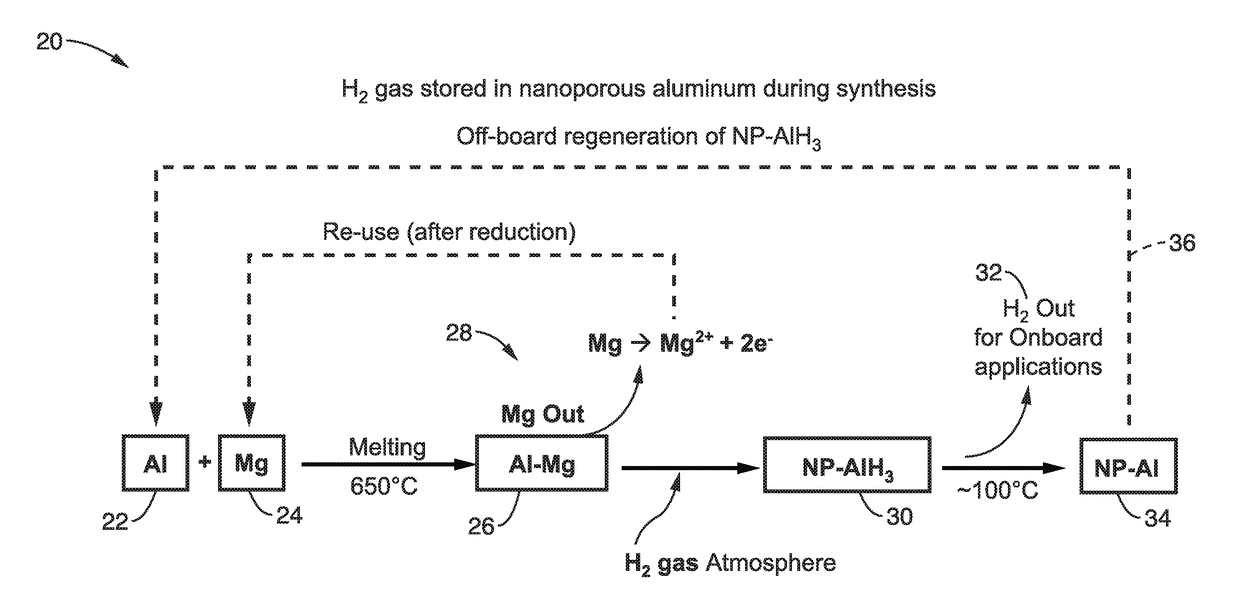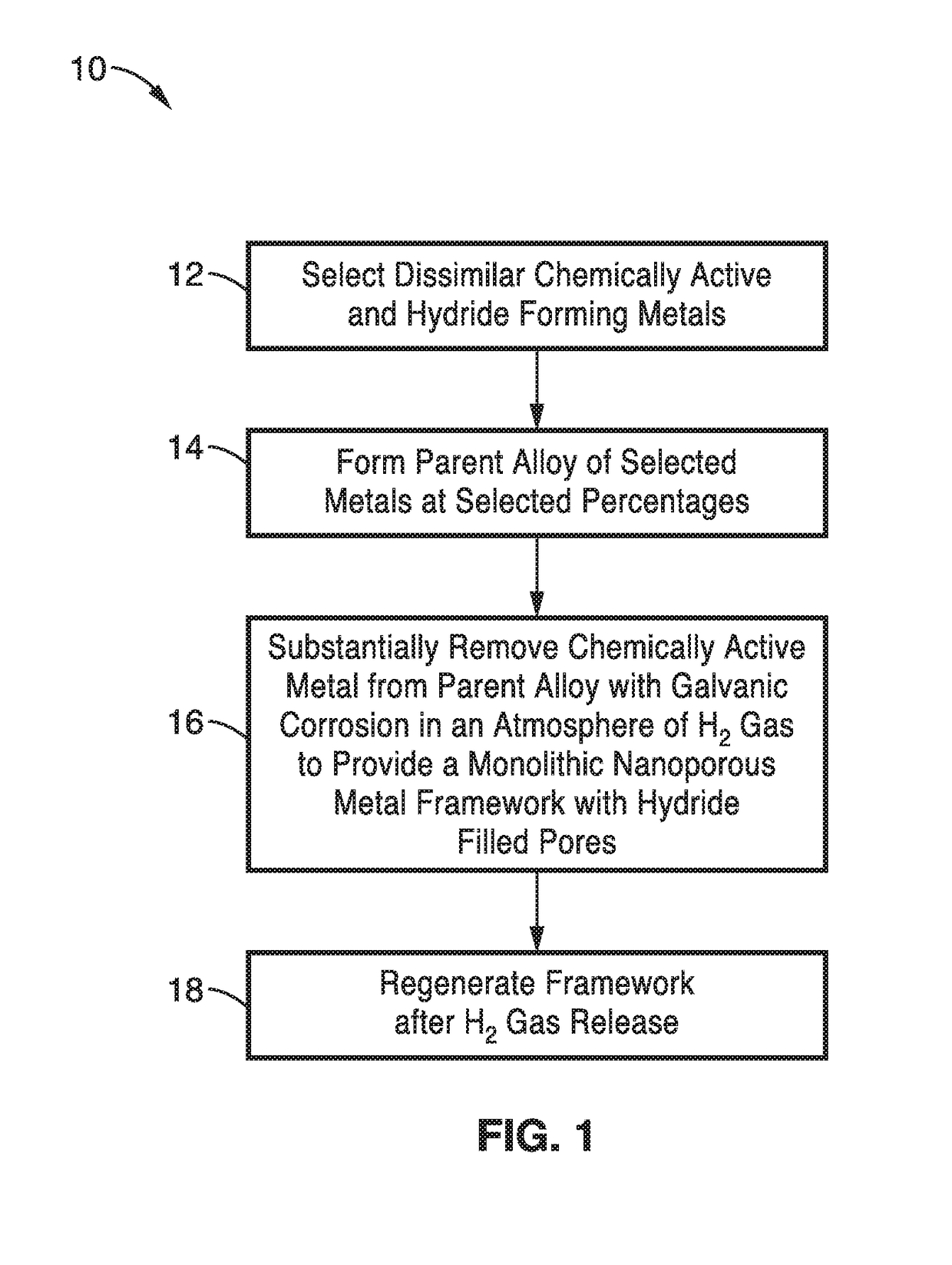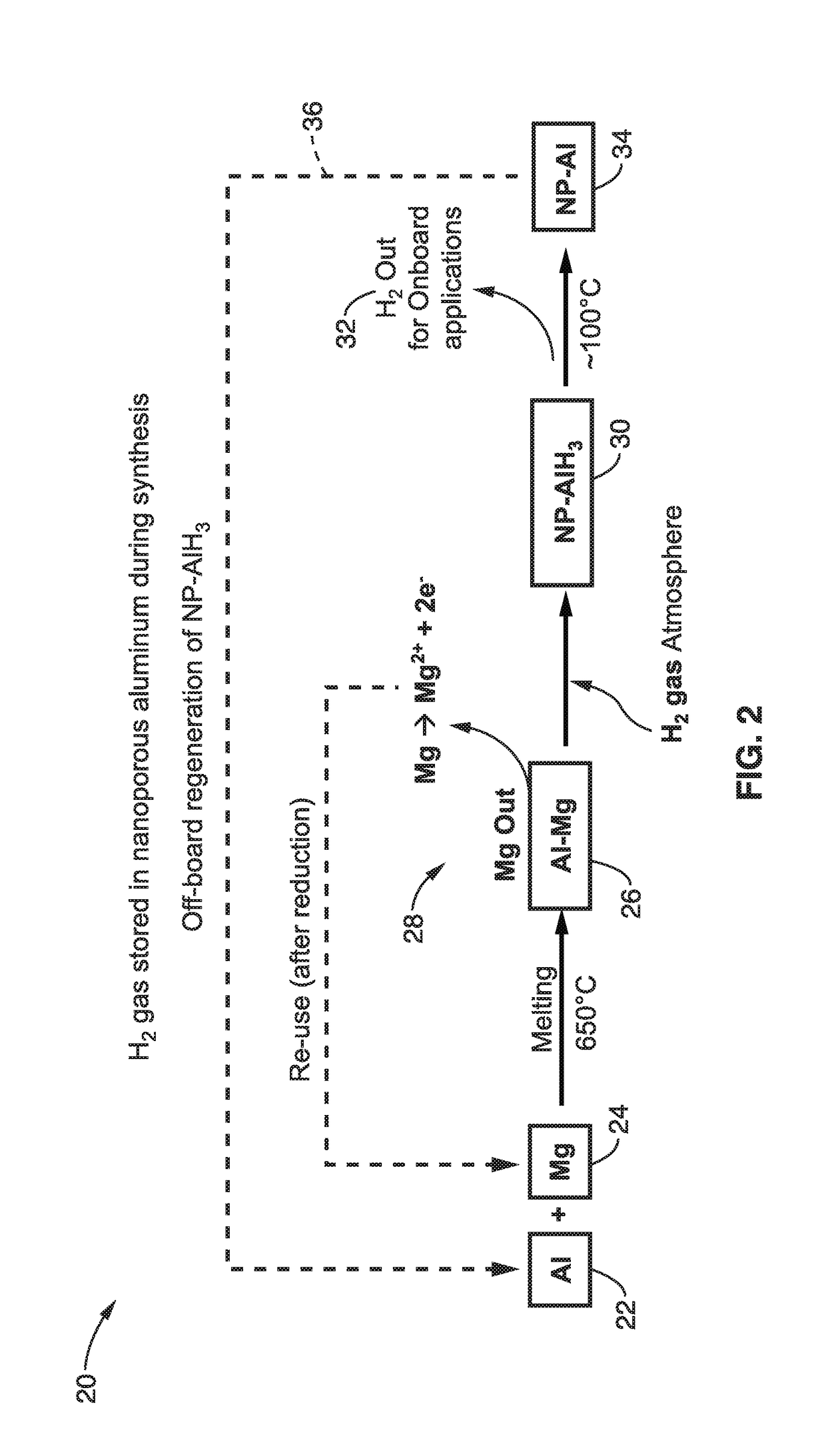Hydrogen storage in nanoporous and nanostructured hydride forming metals
a technology of nanoporous and nanostructured hydride, which is applied in the field of nanoporous material synthesis, can solve the problems of metal dissolution in acidic and basic electrolyte solutions, inability to synthesize from existing dealloying methods, and inability to synthesize ultrafine nanoporous al, etc., and achieves high capacity, reliable and inexpensive production, and cost-effective effects
- Summary
- Abstract
- Description
- Claims
- Application Information
AI Technical Summary
Benefits of technology
Problems solved by technology
Method used
Image
Examples
example 1
[0047]In order to demonstrate the fabrication methods and functionality of the solid-state hydrogen storage materials, a system 20 using an alloy of aluminum and magnesium metals was produced and tested. In the illustration shown in FIG. 2, an Al / Mg parent alloy 26 with eutectic composition (Al30Mg70 at.%) was made by homogeneously melting pure Al metal 22 and pure Mg metal 24 at 650° C. or at 750° C. in a graphite crucible, using a quartz tube under argon flow.
[0048]Two microstructural phases were observed in the eutectic Al / Mg alloys 26. A light phase, corresponding to an a-Mg solid solution, and a dark phase representing β-Al12Mg17intermetallics were evaluated. These two different phases are responsible for the bimodal porosity in nanoporous Al after selective removal of Mg to produce ultrafine nanoporous aluminum (NP—Al).
[0049]In this system, a metal cation Al3+ electrolyte was used to selectively oxidize the Mg metal phase 28 from the Al / Mg system. This avoided the use of an aq...
example 2
[0058]To demonstrate the functionality of the system 38 as a non-chemical synthetic methodology to reversibly and repeatable synthesize NP—AlH3 for hydrogen storage, nanoporous aluminum (NP—Al) frameworks 40 were synthesized and evaluated. As seen in FIG. 3 and FIG. 5, the system 38 embodiment provides direct storage of H2 gas in plasmonic nanoporous aluminum using sunlight excitation.
[0059]Regeneration of the hydride hydrogen storage capabilities of the nanoporous metal framework also utilized hot electron induced formation but from a different source than dealloying by galvanic corrosion. To charge or recharge the aluminum hydride (AlH3) on the porous metal NP—Al framework 40, the plasmonic properties of nanostructured metals are exploited to produce hot electrons. In the embodiment shown in FIG. 3, the hot electrons that are used to dissociate hydrogen gas molecules are generated by plasmonic excitation of the nanoporous framework with a light source such as sunlight or a laser.
[...
PUM
| Property | Measurement | Unit |
|---|---|---|
| pressure | aaaaa | aaaaa |
| temperature | aaaaa | aaaaa |
| temperature | aaaaa | aaaaa |
Abstract
Description
Claims
Application Information
 Login to View More
Login to View More - R&D
- Intellectual Property
- Life Sciences
- Materials
- Tech Scout
- Unparalleled Data Quality
- Higher Quality Content
- 60% Fewer Hallucinations
Browse by: Latest US Patents, China's latest patents, Technical Efficacy Thesaurus, Application Domain, Technology Topic, Popular Technical Reports.
© 2025 PatSnap. All rights reserved.Legal|Privacy policy|Modern Slavery Act Transparency Statement|Sitemap|About US| Contact US: help@patsnap.com



